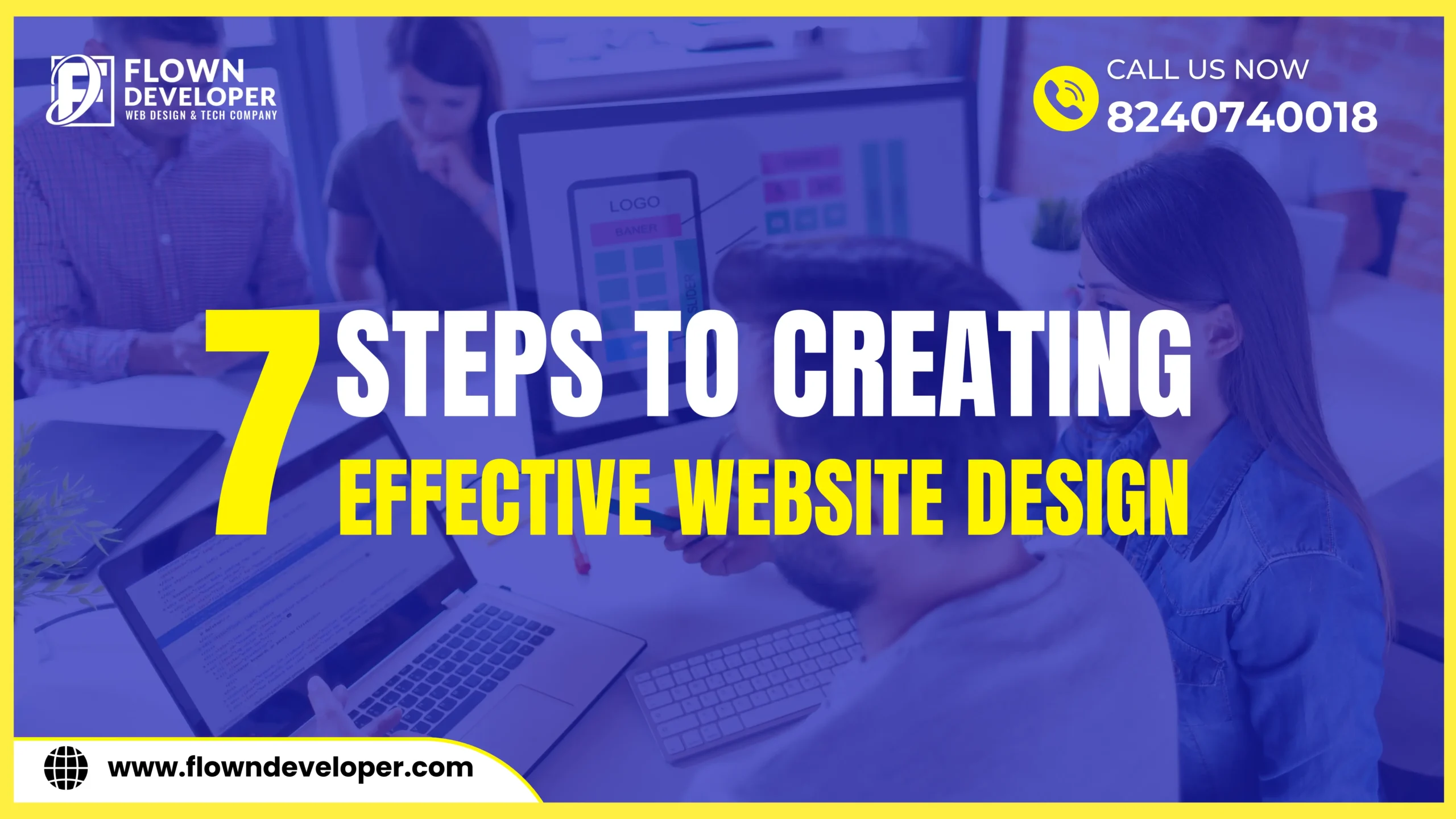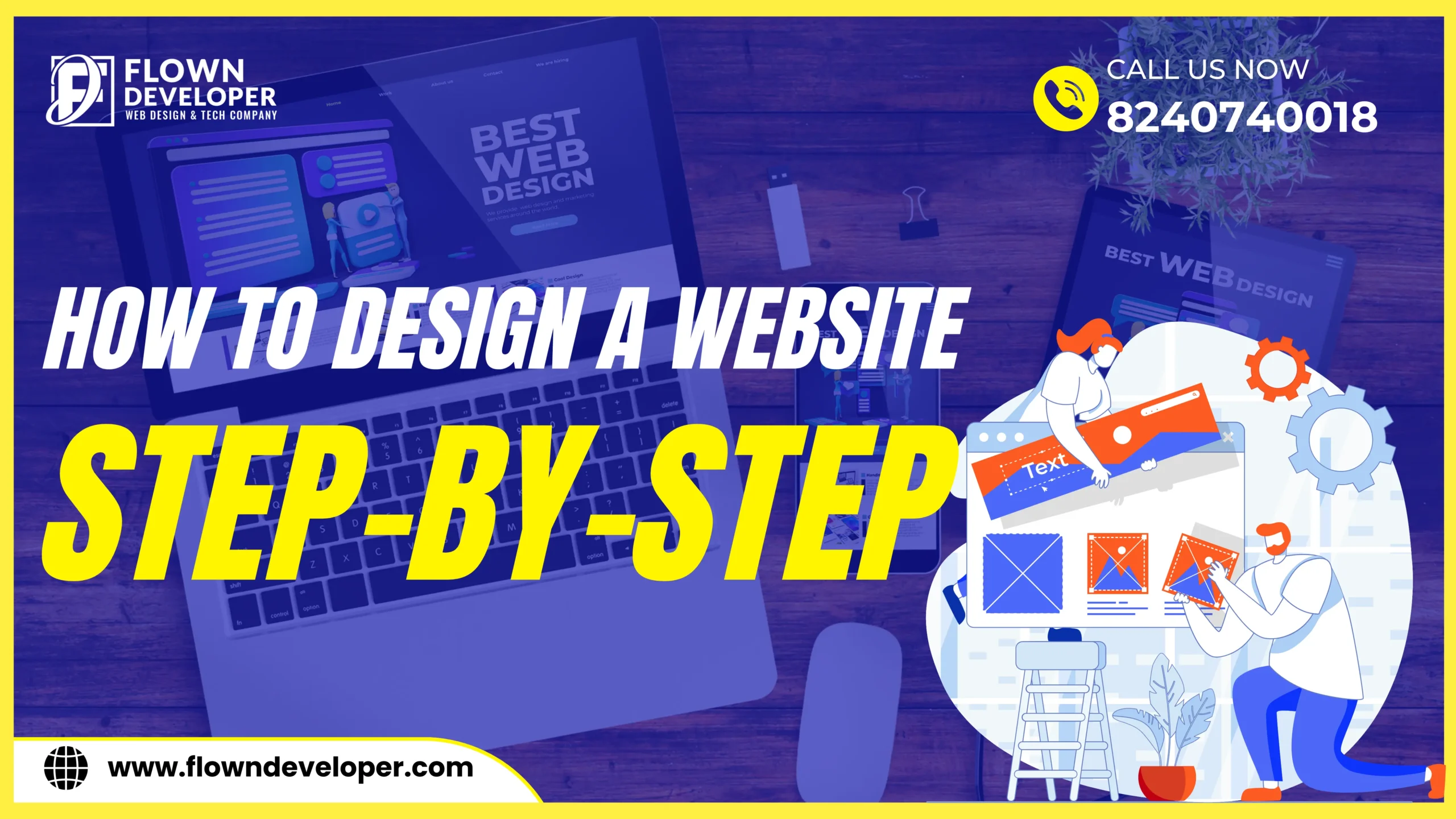Revving Up Revenue: How Website Speed Drives E-commerce Success
Introduction
Ecommerce
has
become
indispensable
in
the
digital
age,
with
online
shopping
gaining
momentum
globally.
A
key
factor
determining
the
success
of
ecommerce
websites
is
speed
–
how
quickly
pages
load.
Slow
website
speed
negatively
impacts
user
experience,
conversions,
SEO
rankings,
and
overall
business
results.
This
article
will
explore
the
multifaceted
relationship
between
site
speed
and
ecommerce
achievement.
Understanding Website Speed
Website speed refers to how fast pages load and is affected by various technical factors:
- Server performance and web hosting plan limitations can constrain speed. Upgrading servers and plans helps.
- Efficient coding and site architecture enable faster rendering and response times. Minification and caching improve performance.
- Large image and media files have slow load times unless properly compressed and optimized.
- Sites need to be optimized for desktop and mobile browsers with varying capabilities.
User Experience and Conversions
When ecommerce websites are slow to load, bounce rates rise as visitors quickly leave.
Studies show each second of delay reduces conversions.
For example, by improving speed, Shopify saw conversion rates increase by 7%.
Providing a seamless user experience increases sales.
A slow-loading website can frustrate users and signal unprofessionalism or lack of trustworthiness.
Users are likelier to abandon a website and look for alternatives if they wait too long.
Additionally, delays in loading times can also negatively impact the overall user experience, making it less likely for visitors to engage with the website and complete a purchase.
Studies have shown that even a one-second delay in loading time can significantly decrease conversions.
For example, Amazon found that every 100ms delay in loading time resulted in a 1% decrease in sales.
Similarly, Google discovered that an increase in loading time from 0.4 seconds to 0.9 seconds reduced search traffic and user engagement by 20%.
Ecommerce platforms like Shopify recognize the importance of website loading speed and have witnessed the positive impact of improving it.
By optimizing their websites to load faster, they increased their conversion rates by 7%.
Therefore, providing a seamless user experience by ensuring fast loading times is crucial for ecommerce websites.
It not only reduces bounce rates but also positively impacts sales and conversions.
Search Engine Rankings
Page speed constitutes a factor within Google’s ranking algorithm.
Meeting core web vitals like fast load times and quick interactivity helps SEO.
Research shows the fastest sites can achieve up to 30% higher rankings.
Speed also increases click-through rates from search listings.
Page speed is indeed a factor in Google’s ranking algorithm.
Faster-loading websites may receive a slight ranking boost from Google because it considers page speed a ranking signal.
In addition to the ranking benefits, meeting core web vitals such as fast load times and quick interactivity can also improve the overall user experience.
If a website loads quickly and provides a smooth interactive experience, users are likelier to engage with content and stay on it longer.
Research has shown that websites with faster loading times can achieve higher rankings in search results.
It has been reported that the fastest sites can achieve up to 30% higher rankings than slower sites.
Moreover, speed can also impact click-through rates from search listings.
Faster-loading websites appear in search results more often, so users are more likely to click on them.
As a result, organic traffic and conversions can increase.
Therefore, optimizing page speed and ensuring fast load times and quick interactivity can positively impact SEO, search rankings, user experience, and click-through rates.
Mobile Responsiveness
With rising mobile ecommerce, site speed on smartphones is crucial.
Fast mobile speeds improve user experience and conversions.
Accelerated mobile pages (AMP) display quickly on phones, which Google rewards in mobile search results.
With the increasing popularity of mobile ecommerce, the speed at which websites load on smartphones has become essential.
Fast mobile speeds significantly enhance the user experience, leading to higher conversion rates.
Accelerated Mobile Pages (AMP) were introduced to cater to this need for speed.
AMPs are web pages specifically designed to load instantly on mobile devices.
They utilize stripped-down HTML, CSS, and JavaScript versions, prioritizing speed and efficiency.
With AMP, businesses can ensure that their websites display quickly on smartphones, ensuring users a smooth and seamless browsing experience.
In addition to offering a better user experience, AMPs also have an advantage in search engine optimization.
By recognizing the importance of fast-loading pages on mobile devices, Google rewards AMPs by giving them higher rankings in mobile search results.
This means that websites utilizing AMP technology have a higher chance of being discovered by mobile users, ultimately boosting their visibility and driving more traffic.
In conclusion, with the increasing emphasis on mobile ecommerce, having fast-loading mobile web pages is crucial.
Implementing Accelerated Mobile Pages (AMPs) allows businesses to optimize their sites for mobile users, resulting in improved user experiences, higher conversions, and better visibility in mobile search results.
Customer Loyalty
When an ecommerce site is slow, it damages customer perception and retention.
Shoppers expect a seamless experience and are unwilling to wait on slow websites.
Brands like Amazon know focusing on speed is critical to loyalty.
When an ecommerce site is slow, it frustrates customers and affects their perception of the brand.
In today’s fast-paced digital world, shoppers expect a seamless and efficient online experience.
Laggy checkout processes or slow-loading pages can create a negative impression of the brand and reduce customer loyalty.
Customers are generally unwilling to wait on slow websites.
Research has shown that even a few seconds of delay can significantly impact conversion rates.
Potential buyers could forsake their shopping carts and look for alternatives elsewhere if a website takes an extended period to load or respond.
Brands like Amazon have recognized the importance of speed in maintaining customer loyalty.
They invest heavily in optimizing their website performance and delivery infrastructure to provide a fast and reliable shopping experience.
Amazon understands that a slow website can lead to lost sales and dissatisfied customers, affecting its overall reputation.
In conclusion, the speed of an ecommerce site is crucial for customer perception and retention.
Slow websites can damage customers’ trust and satisfaction, leading to decreased loyalty and potential loss of sales.
Brands must prioritize website speed and ensure a seamless, efficient online shopping experience to retain customers and stay competitive in the ecommerce industry.
Optimization Techniques
Technical best practices to improve website speed include:
- Caching to store pages and assets for faster retrieval
- Content delivery networks to distribute resources and reduce latency
- Minification of HTML/CSS/JavaScript to reduce file sizes
- Gzip compression to compact files being transferred. Utilizing the appropriate format and reducing image size to optimize images
- Reducing the number of HTTP requests by consolidating resources
- Loading images and videos only when necessary by using lazy loading
- Enabling browser caching to store static resources locally
- Choosing a web hosting service that is fast and reliable
- To enable server-client communication to be faster and more efficient, the HTTP/2 protocol is implemented.
- Reducing the use of external scripts and plugins that can slow down the website
- Using asynchronous loading for scripts and stylesheets to prevent rendering delays
- Prioritizing above-the-fold content to ensure it loads quickly
- Reducing the number of redirects on the website
- Optimizing the database and server to ensure efficient data retrieval and processing
- Regularly monitoring and optimizing website performance using tools like Google PageSpeed Insights or GTmetrix.
Website Traffic
Higher website speeds increase organic search traffic as visitors are likelier to click on fast-loading results. Speed also facilitates social media sharing and drives referral traffic. Case studies show fast sites can double their unique visitors month-over-month. Several case studies and research support that higher website speeds positively impact organic search traffic. Here are some reasons why:
1. Improved user experience: Having a website load quickly increases the chance of users staying and engaging with the content. Conversely, slow-loading pages often lead to high bounce rates and lower user satisfaction. Websites that have faster load times provide a better user experience, which can result in increased visitor retention and engagement.
2. Higher click-through rates (CTR): Search engine result pages (SERPs) often display the load time of each website next to the search result. Websites are more likely to attract users with faster load times because they know they can quickly access the desired information. A higher CTR can lead to increased organic search traffic.
3. Social media sharing: Social media is crucial in driving website traffic in today’s digital landscape. As a website’s loading speed increases, so does the likelihood of users sharing it on various social media platforms. Fast-loading websites make sharing links, articles, and images easier, increasing referral traffic.
4. Enhanced search engine ranking: Website speed is an acknowledged element influencing its placement in rankings, including platforms like Google. Websites that load faster often receive a ranking boost compared to slower sites. Improved rankings can lead to increased organic search traffic.
5. Double traffic month-over-month: Some case studies have shown that fast websites can double their unique visitors month-over-month. Faster load times can significantly impact user behaviour, making visitors more likely to browse multiple pages, engage with content, and convert into customers or subscribers.
Overall, website speed optimization can improve user experience, increase CTR, drive referral traffic, enhance search engine rankings, and boost organic search traffic.
Mobile App Performance
Similar to websites, app loading speed impacts user experience and conversions.
Fast, polished apps also achieve higher rankings in app stores.
Top apps like Amazon emphasize quick launch times and seamless performance.
Fast loading speed is crucial for app success as it directly impacts user experience and conversions.
Just like websites, users need more patience for slow-loading apps, and they are more likely to abandon or uninstall an app that takes too long to load.
Slow-loading apps frustrate users and lead to lower user engagement and poor overall user experience.
Additionally, app loading speed plays a significant role in app store rankings.
Absolutely, app stores like the Apple App Store and Google Play Store factor in the loading speed when they assess the visibility and ranking of applications.
Apps that demonstrate faster loading times and seamless performance are more likely to be featured and ranked higher in search results.
This enhanced visibility has the potential to result in a higher number of app downloads and improved conversion rates.
Top apps like Amazon recognize the importance of fast loading speed and prioritize optimizing their app’s performance.
They invest in technologies and techniques that ensure their app launches quickly and provides a smooth user experience.
By doing so, they enhance user satisfaction and improve their app’s chances of reaching a wider audience and attaining higher app store rankings.
International Considerations
Global users have high expectations for speed regardless of location.
Fast cross-border ecommerce sites see increased international traction and sales.
Localizing content while maintaining speed remains a challenge.
In today’s globalized world, users expect fast and efficient online experiences, regardless of location.
This is particularly true in the case of cross-border ecommerce, where customers expect seamless and quick transactions.
Fast cross-border ecommerce sites are more likely to gain international traction and witness increased sales.
However, one challenge that ecommerce businesses face when expanding globally is how to localize their content without compromising the speed of their website.
Localization involves adapting content, such as language, currency, and cultural references, to make it more relevant and engaging for the target audience in different countries.
While localization is crucial for connecting with international customers, it can sometimes slow down a website’s performance.
Translating and adapting content requires additional server requests and data transfers, impacting page load times and overall site speed.
To overcome this challenge, businesses must balance localization and speed optimization.
Here
are
some
strategies
to
consider:
1.
Content
Delivery
Network
(CDN):
Utilize
a
CDN,
which
helps
distribute
website
content
across
multiple
servers
worldwide,
reducing
latency
and
improving
speed.
This
technology
ensures
that
localized
content
is
readily
available
to
users,
regardless
of
location.
2.
Caching:
Implement
caching
techniques
to
store
frequently
accessed
content
locally
on
users’
devices
or
in
nearby
servers.
This
reduces
the
need
for
repeated
localization
requests
and
enhances
site
speed.
3.
Optimized
images
and
media:
Compress
and
optimize
images
and
files
to
reduce
size
without
compromising
quality.
This
ensures
faster
load
times
for
localized
content.
4.
Server
infrastructure:
Invest
in
reliable
and
scalable
server
infrastructure
to
handle
increased
user
traffic
from
different
locations.
Having
servers
located
strategically
in
various
regions
can
minimize
latency
and
improve
global
site
performance.
5.
Prioritize
critical
content:
Identify
the
most
crucial
localized
content,
such
as
product
descriptions
and
checkout
processes,
and
prioritize
them
for
faster
loading.
Non-essential
content
can
be
loaded
asynchronously
to
avoid
delaying
the
crucial
elements.
6.
Continuous
performance
monitoring:
Regularly
monitor
website
performance
and
conduct
speed
tests
from
various
global
locations.
This
helps
identify
any
bottlenecks
or
areas
for
improvement
in
both
speed
and
localization.
By
implementing
these
strategies,
businesses
can
ensure
that
their
cross-border
ecommerce
sites
provide
a
fast
and
localized
experience,
meeting
the
high
expectations
of
global
users
while
driving
international
traction
and
sales.
Content Optimization
While
technical
speed
is
crucial,
optimizing
content
for
fast
loading
is
also
vital.
Sites
can
balance
speed
and
compelling
content
through
selective
multimedia
usage,
lightweight
fonts,
and
strategic
image
compression.
Websites
can
enhance
their
performance
by
incorporating
selective
multimedia
usage
without
sacrificing
visual
appeal.
Instead
of
using
excessive
multimedia
elements,
consider
utilizing
them
strategically
to
enhance
the
user
experience.
This
approach
ensures
that
the
content
remains
engaging
and
informative
while
allowing
for
fast
loading
times.
Another
important
aspect
is
the
use
of
lightweight
fonts.
Fonts
play
a
significant
role
in
how
content
is
presented,
but
some
fonts
can
slow
down
the
loading
speed
of
a
website.
It
is
advisable
to
choose
fonts
that
are
optimized
for
web
use
and
have
a
smaller
file
size.
This
speeds
up
the
loading
process
and
contributes
to
a
visually
appealing
website.
Furthermore,
strategic
image
compression
is
crucial
for
fast-loading
websites.
Images
are
often
the
most
significant
elements
on
a
webpage
and
can
load
slower
if
not
optimized.
By
compressing
images
without
compromising
quality,
websites
can
reduce
their
file
sizes
and
improve
loading
speed.
Overall,
finding
the
right
balance
between
technical
speed
and
compelling
content
is
essential
for
a
successful
website.
Implementing
these
strategies,
such
as
selective
multimedia
usage,
lightweight
fonts,
and
image
compression,
can
help
optimize
content
for
fast
loading
without
compromising
its
effectiveness.
Third-Party Integrations
Integrations
like
payment
gateways
and
analytics
can
negatively
impact
website
speed.
Ecommerce
sites
should
carefully
evaluate
third-party
tools
and
prioritize
fast,
lightweight
options
that
keep
up
with
performance.
There
are
a
few
reasons
why
integrations
such
as
payment
gateways
and
analytics
can
affect
website
speed:
1.
Additional
HTTP
Requests:
Each
integration
typically
requires
its
own
set
of
scripts
and
files
to
be
loaded,
which
means
the
browser
makes
more
HTTP
requests.
This
can
significantly
increase
the
loading
time
of
a
web
page.
2.
External
Dependencies:
Integrations
rely
on
external
servers
and
services
to
process
data
or
handle
transactions.
If
there
are
delays
or
issues
with
these
external
dependencies,
it
can
slow
down
the
website’s
overall
performance.
3.
Code
Execution:
The
code
associated
with
integrations
may
require
additional
processing
power
and
resources.
If
the
code
is
optimized
and
efficient,
it
can
positively
impact
the
website’s
speed.
To
mitigate
these
potential
issues,
ecommerce
sites
should
carefully
evaluate
and
select
third-party
tools
prioritizing
speed
and
performance.
Consider
the
following
steps:
1.
Research
and
compare
options:
Look
for
integrations
known
for
their
lightweight
nature
and
optimized
performance.
Read
reviews
and
compare
the
speed
impact
of
different
tools.
2.
Test
and
monitor
performance:
Conduct
thorough
performance
testing
to
measure
the
impact
on
website
speed
before
integrating
any
tool.
Regularly
monitor
the
website’s
performance
to
identify
any
degradation
caused
by
the
integration.
3.
Optimize
code
and
configurations:
Work
with
the
developers
of
the
third-party
tools
to
ensure
that
any
code
or
configurations
associated
with
the
integration
are
optimized
for
speed.
This
may
involve
minimizing
file
sizes,
reducing
the
number
of
HTTP
requests,
and
utilizing
caching
techniques.
4.
Prioritize
critical
integrations:
Evaluate
the
importance
and
necessity
of
each
integration.
Only
integrate
tools
essential
for
the
website’s
functioning
or
bring
significant
value
to
the
business.
Avoid
unnecessary
integrations
that
may
negatively
impact
performance.
5.
Regularly
review
and
update
integrations:
Keep
track
of
updates
and
improvements
made
by
third-party
providers.
Regularly
review
and
update
integrated
tools
to
take
advantage
of
performance
enhancements
and
bug
fixes.
By
carefully
evaluating
and
prioritizing
fast,
lightweight
options,
ecommerce
sites
can
minimize
the
negative
impact
of
integrations
and
ensure
better
website
speed
and
performance.
Case Studies
Leading ecommerce players like Amazon and Shopify make speed a primary focus.
Amazon’s obsession with low latency has helped them dominate.
Shopify builds sites optimized for fast loading by default.
These brands set the standard.
Speed is crucial for leading ecommerce players like Amazon and Shopify.
These companies recognize the importance of quick website loading times and low latency to enhance user experience and overall customer satisfaction.
Amazon, known for its obsession with low latency, has mastered the art of providing fast and seamless online shopping experiences.
They have invested heavily in infrastructure like data centers and content delivery networks (CDNs) to reduce website loading times.
This focus on speed has enabled them to dominate the ecommerce market by delivering an efficient and convenient online shopping experience.
Similarly, Shopify, a well-known ecommerce platform, emphasizes speed optimization in its website-building process.
When users create an online store using Shopify, the platform optimizes the site for fast loading times.
This default speed optimization feature ensures that Shopify-powered websites deliver customers a smooth and quick browsing experience.
Amazon and Shopify, being prominent players in the ecommerce industry, set the standard for speed optimization.
Their success and dominance encourage other retailers and ecommerce platforms to prioritize speed and invest in technologies that can deliver fast-loading websites.
By establishing speed as a primary focus, these brands contribute to improving user experience in the online shopping world.
User Perception
Psychology
plays
a
role
in
how
users
perceive
speed.
Faster
websites
build
credibility
and
trust.
Brands
incorporating
speed
as
a
core
value
shape
positive
perception.
Psychology
plays
a
crucial
role
in
how
users
perceive
website
speed.
When
websites
load
quickly,
users
perceive
them
as
more
credible
and
trustworthy.
This
perception
is
based
on
the
cognitive
bias
known
as
the
“halo
effect,”
where
positive
qualities
in
one
aspect
of
a
brand
or
product
influence
our
perception
of
other
aspects.
Fast-loading
websites
are
generally
associated
with
efficiency,
reliability,
and
professionalism.
Users
often
assume
that
a
brand
that
values
speed
in
its
online
presence
is
also
efficient
and
reliable
in
its
products
or
services.
This
positive
perception
can
lead
to
increased
trust,
engagement,
and
likelihood
of
conversion.
On
the
other
hand,
slow-loading
websites
can
create
frustration
and
negative
perceptions
of
a
brand.
Research
has
shown
that
users
are
likelier
to
abandon
a
slow
website
and
explore
alternatives.
Slow-loading
websites
are
often
associated
with
inefficiency,
unreliability,
and
lack
of
attention
to
detail.
These
negative
perceptions
can
have
a
detrimental
impact
on
a
brand’s
credibility
and
trustworthiness.
Therefore,
brands
prioritizing
speed
as
a
core
value
can
shape
positive
user
perceptions.
By
optimizing
website
speed
and
providing
a
seamless
browsing
experience,
brands
can
enhance
their
credibility,
trust,
and
overall
user
satisfaction.
The Future
Expectations
for
speed
will
continue
rising.
Leading
brands
will
push
the
limits
of
performance.
Speed
will
separate
the
winners
and
losers
as
it
becomes
a
competitive
advantage.
In
today’s
fast-paced
world,
consumers
have
come
to
expect
quick
results
and
instant
gratification.
As
technology
advances,
these
expectations
for
speed
will
only
continue
to
rise.
Leading
brands
across
various
industries
will
be
at
the
forefront
of
this
trend,
constantly
pushing
performance
limits
to
meet
and
exceed
these
heightened
expectations.
Whether
in
e-commerce,
customer
service,
or
product
delivery,
companies
will
strive
to
offer
the
fastest
and
most
efficient
experiences
possible.
Customers
will
no
longer
tolerate
slow-loading
websites,
lengthy
response
times,
or
delayed
shipments.
They
will
gravitate
towards
brands
that
can
deliver
on
their
need
for
speed.
Being
able
to
provide
speed
will
not
only
enhance
customer
satisfaction
but
also
become
a
significant
competitive
advantage.
Companies
offering
faster
solutions,
quicker
turnaround
times,
and
seamless
experiences
will
rise
above
their
competitors.
This
advantage
will
increase
customer
loyalty,
retention
rates,
revenue
and
market
share.
Furthermore,
the
rapid
advancement
of
emerging
technologies
such
as
5G,
AI,
and
automation
will
only
fuel
the
need
for
speed.
These
technologies
can
revolutionize
industries
and
create
new
possibilities
for
efficiency
and
performance.
Brands
that
can
harness
these
tools
effectively
will
gain
a
significant
advantage
in
speed,
staying
ahead
of
the
curve
and
setting
new
standards
for
their
respective
industries.
However,
companies
need
to
strike
a
balance
between
speed
and
quality.
While
speed
is
crucial,
it
should
not
come
at
the
expense
of
reliability
or
accuracy.
Brands
must
ensure
that
they
deliver
fast
results
without
compromising
the
overall
experience
or
the
quality
of
their
products
and
services.
In
conclusion,
the
expectations
for
speed
will
continue
to
rise,
driven
by
consumer
demands
and
technological
advancements.
Leading
brands
that
can
meet
and
exceed
these
expectations
will
gain
a
competitive
advantage,
separating
themselves
from
the
rest
of
the
market
and
positioning
themselves
as
winners
in
the
eyes
of
consumers.
Summary
In conclusion, website speed has a demonstrated impact on all aspects of ecommerce success – from user experience to SEO to conversions. Prioritizing speed is now table stakes to compete and thrive online. Studies have consistently shown that website speed directly affects user experience, with slower load times leading to higher bounce rates and lower engagement. Indeed, even a short delay of just a few seconds can significantly influence conversion rates, potentially causing missed sales chances and a decrease in overall revenue.
Furthermore, search engines such as Google have integrated page speed as a determining factor in their algorithms for ranking websites.
A
slow
website
can
negatively
impact
SEO
efforts,
leading
to
lower
visibility
and
less
organic
traffic.
Conversely,
a
swiftly
responsive
website
has
the
potential
to
enhance
user
engagement,
extend
the
time
spent
on
the
site,
and
ultimately
elevate
conversion
rates.
It
enhances
user
satisfaction,
encourages
repeat
visits,
and
fosters
customer
loyalty.
To
compete
and
flourish
within
the
fiercely
competitive
realm
of
ecommerce,
businesses
must
prioritize
website
speed.
It
has
become
a
baseline
requirement
for
online
success.
With
countless
options
and
alternatives
available
to
consumers,
a
slow
website
can
quickly
lead
customers
to
abandon
their
shopping
carts
and
turn
to
competitors.
Investing
in
website
speed
optimization,
including
optimizing
code,
minimizing
page
elements,
compressing
images,
and
leveraging
caching
techniques,
is
crucial.
Utilizing
content
delivery
networks
(CDNs),
which
store
and
deliver
website
content
from
servers
close
to
the
user,
can
also
significantly
improve
load
times,
especially
for
users
farther
away
from
the
website’s
origin
server.
Every
aspect
of
an
ecommerce
business,
from
attracting
and
retaining
customers
to
improving
search
visibility,
relies
on
a
fast
and
reliable
website.
Speed
is
no
longer
just
a
nice-to-have
feature
but
a
fundamental
requirement
for
online
success.
Therefore,
businesses
must
prioritize
website
speed
to
stay
competitive
and
thrive
in
today’s
digital
landscape.







